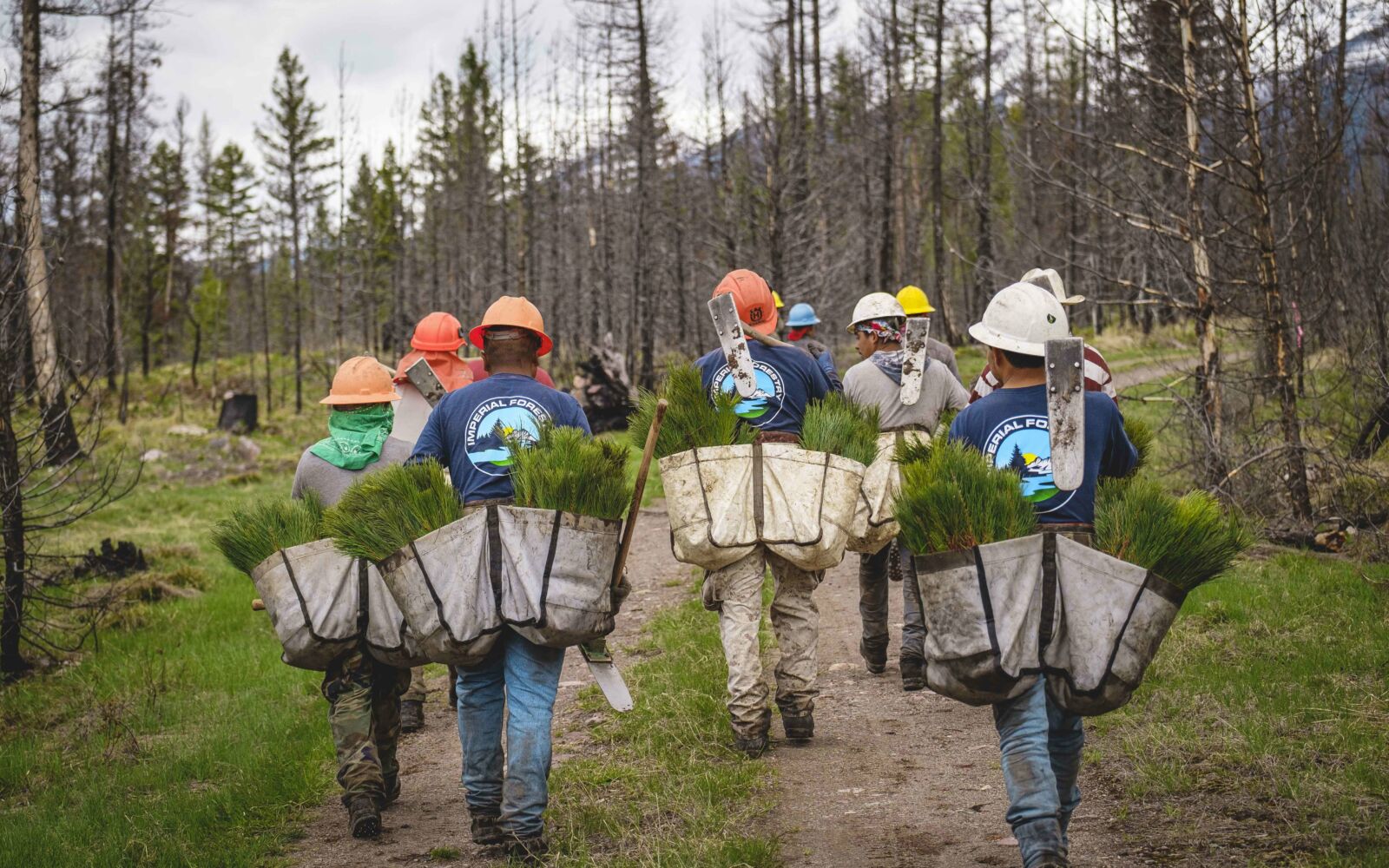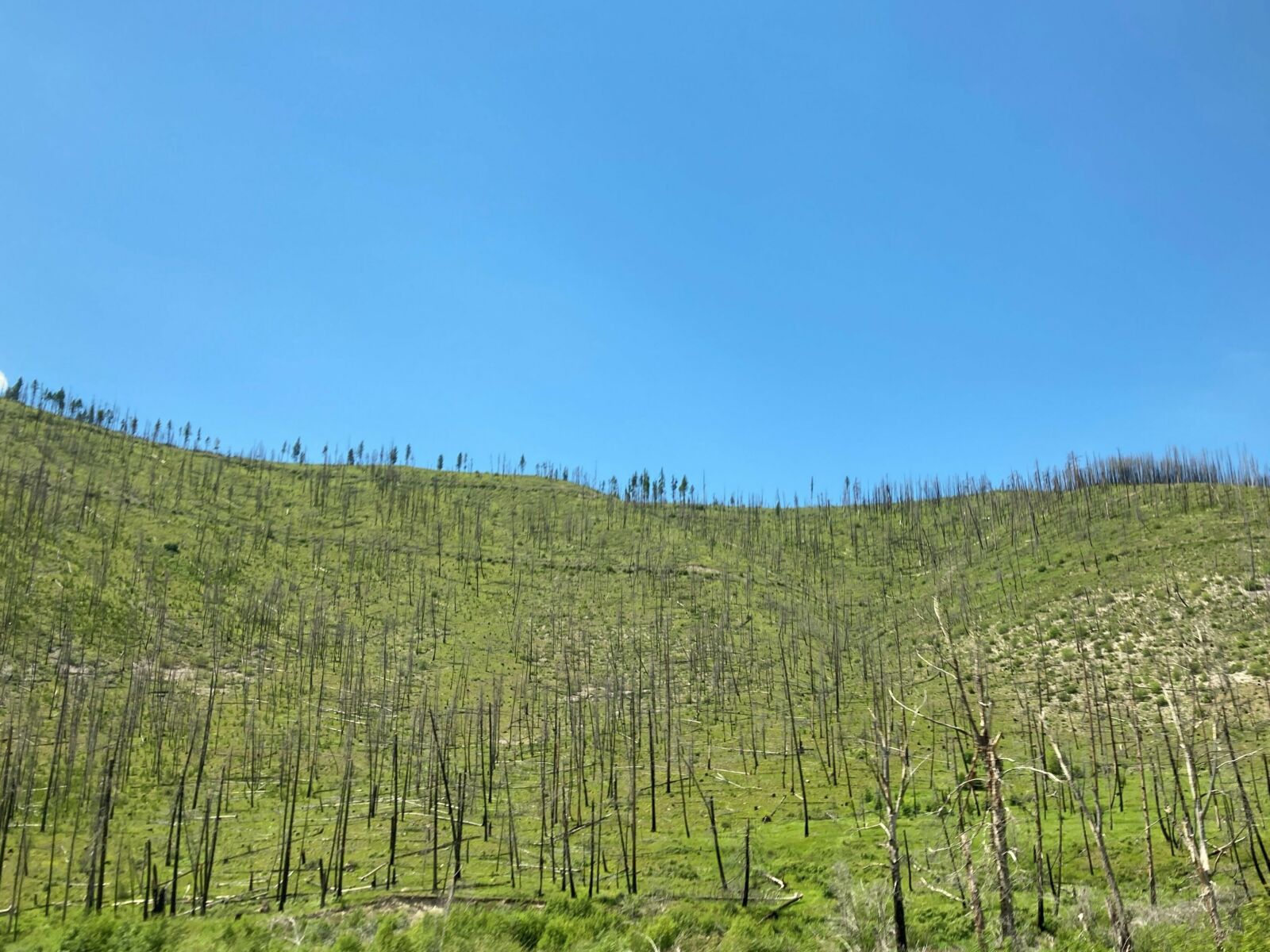With increasing numbers of high profile and severe wildfires, many of us are asking what we can do to help. Forests provide vast benefits to people, wildlife, and ecosystems. Replanting soon after a wildfire helps the landscape quickly return to delivering these benefits.
Learn more about how the NFF plants trees on National Forests, and get some tips for getting involved in local planting efforts in your community.
Can I plant trees in the forest with the National Forest Foundation?
Our partners at the U.S. Forest Service select reforestation project sites each year based on ecological need, providing the NFF with a portfolio of projects to support. Projects are large in scale, often stretching across hundreds of acres. Most projects occur on rugged terrain, miles from major roads, and hours from major cities.

Photo by Dave Gardner Creative
Professional tree planters on the Lolo National Forest in Montana.
When projects occur on wildfire scars, additional challenges can arise from dangerous burned snags and falling tree limbs. While we would love to offer volunteer opportunities to help replant on National Forests, we are unable to due to the size and nature of our projects.

A typical planting unit is steep and remote.
We hope to incorporate more volunteer opportunities into our Reforestation Program in the future. Until then, we encourage our supporters to engage with local organizations to volunteer and give back to your local public spaces.
Here’s how you can help to get trees back in the ground:
1. Donate to plant trees, or start a fundraiser. Contributions to our will plant trees in areas where they are needed most, are least likely to regenerate naturally, and will have significant ecological benefit.
2. Reach out directly to local government offices, like Parks and Recreation, or other land management agencies, like your local Forest Service office. There are often local urban tree planting projects after road construction, neighborhood development, or other public works construction projects. Urban trees help minimize heat, provide habitat for small animals, and filter pollution from the air. Some cities also have “adopt a tree” programs, which enlist citizens to help water newly planted and older trees, especially in hot summer months.
3. Connect with local conservation or environmental groups, as well as local outfitters or activity groups. These groups might coordinate with public land agencies to facilitate tree planting or other volunteer opportunities.
4. If you own your property and want a few more trees, research local species and planting windows. Inquire with nearby nurseries, arborists, or silviculturists about trees that would be most beneficial on your land, as well as when and where to plant.
5. It’s possible that state forests or state parks will have tree planting events. Check their websites or contact their offices.

